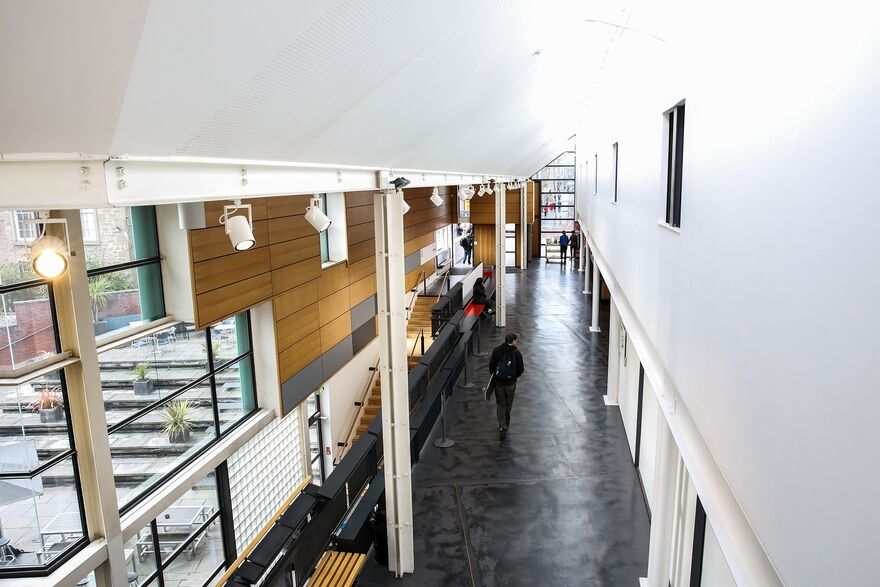
Patrick Staff
The Prince of Homburg
22 June - 1 September 2019
This exhibition by British artist Patrick Staff debuted a major video installation and series of sculptural works reinterpreting 19th century German writer Heinrich von Kleist's play The Prince of Homburg.

Opening with a disoriented Prince sleepwalking in royal gardens, the original play, written in 1810, develops by swift degrees into a personal nightmare that draws together questions about the limits of state control versus individual freedom. While often interpreted as an assertion for the might of authority, many consider Kleist's work to be a passionate defence of free will. Kleist’s death by joint suicide with his close friend in 1811 contributed to an ongoing fascination with this complex play that continues today.
In their new body of work, Staff reconfigured the play to focus on the symbol of the exhausted, sleepwalking figure as political dissident. Presented across the galleries as a video installation with accompanying sculptural and print works, the exhibition explored cycles of violence, desire and repression that are embedded in contemporary cultural and political crises. Through a range of mediums, Staff explores dream-like transgressions of law and order and the fraught spaces where queer desires manifest.
Through an unconventional narrative structure, Staff’s video cuts together a narration of Kleist’s play with interviews, conversation, found footage, hand painted animation and song. In a series of fragmented ‘daytime’ sequences, a range of artists, writers and performers reflect on contemporary queer and trans identity and its proximity to desire and violence. Intercut with flashes of the sun and sky, city streets and text, subjects include Sarah Schulman, Che Gossett, Macy Rodman and Debra Soshoux. Each of these segments is punctuated by ‘night-time' diversions, narrated by writer Johanna Hedva in the dual role of both narrator and Prince. Loosely following the structure of Kleist’s play, the sleepwalking Prince struggles with his somnambulant habits, and the invasion of the unconscious mind into flesh and bone. In half-remembered dream images, the narrative unfolds through flashes of nocturnal gardens, high visibility reflective clothing, neon signs and a lugubrious ballad.

Throughout the gallery spaces Staff installed a sculpture resembling the type of decorative, defensive architecture that surrounds many colonial and royal properties. Protruding from the walls of the gallery above head height; objects, lights, fabrics and furniture are impaled and discarded on its teeth. Also on display are a series of new, large scale hand-processed photogram prints, collecting images and objects from The Prince of Homburg that have been developed in complete darkness. Through flashes of coloured light, items such as a lost glove, knives, blades, and chains reveal themselves.
Through a varied, interdisciplinary and often collaborative practice comprising video installation, performance, text and sculpture, Staff considers ideas of discipline, dissent, labour and the queer body. This new work was the product of several years’ research and was Staff’s most ambitious and large-scale project to date, bringing together languages of film and live performance with sculptural and photographic works to explore how history, technology, capitalism and the law have fundamentally transformed the social constitution of our bodies today.
As part of the first iteration of the project we were excited to further commission two new texts by Isabel Waidner and Johanna Hedva. These formed part of the exhibition and were also available to purchase as a newly published chapbook.
The Prince of Homburg was co-commissioned by Dundee Contemporary Arts, Scotland, and IMMA (Irish Museum of Modern Art), Ireland. Supported by Arts Council England, Elephant Trust, UK, and Commonwealth & Council Gallery, USA. Video work produced by Spike Island, UK. Special thanks to producer Ali Roche and Humber Street Gallery, UK.

About the artist
Patrick Staff (b.1987, Bognor Regis, England) lives and works in Los Angeles. Their work combines video installation, performance and publishing. They have exhibited extensively, gaining significant recognition and awards for their work which is held in private and public collections internationally. Staff received their BA in Fine Art and Contemporary Critical Studies from Goldsmiths University of London in 2009. They completed the LUX Associate Artists Programme and studied Contemporary Dance at The Place in London, in 2011. Their work has been exhibited at the Museum of Contemporary Art, Los Angeles (2017); New Museum of Contemporary Art, New York (2017); Los Angeles Contemporary Exhibitions (2016); Contemporary Art Gallery, Vancouver (2016); Serpentine Galleries, London (2015); Chisenhale Gallery, London (2015); Tate Liverpool, England (2014); Monte Vista Projects, Los Angeles (2012); Tate Modern, London (2012), and Whitstable Biennale, Whitstable, England (2012), among others. Staff’s 2017 film work Weed Killer was recently acquired by the Museum of Modern Art, New York.







